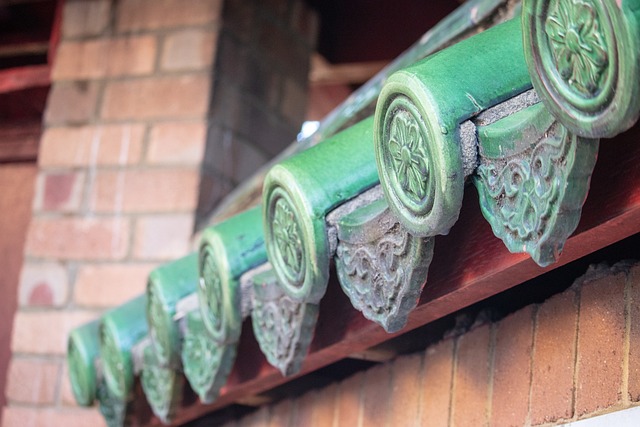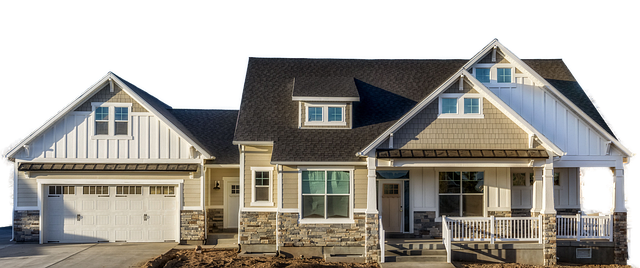Residential roofing protects homes from weather and enhances aesthetics. Key considerations include choosing durable materials, proper installation for extreme weather resistance, and regular maintenance to prevent leaks and structural damage. Regular inspections are vital as age and condition indicate replacement needs. Mistakes in roofing replacement can lead to leaks and reduced lifespan. Before starting a project, get detailed cost estimates from reputable contractors and check insurance coverage.
Your home’s roof is not just a protective shell; it’s a crucial component that safeguards your sanctuary from the elements. This introduction guides you through the comprehensive process of residential roof replacement—from understanding the basics of roofing to choosing materials, installation tips, and maintenance tricks. We’ll also navigate cost estimates and insurance considerations, empowering you with the knowledge to make informed decisions for your home’s most vital coverage.
Understanding Residential Roofing: An Overview

Residential roofing involves the construction and maintenance of roofs for homes. It’s a crucial aspect of home construction and renovation, as the roof protects inhabitants from weather elements while enhancing the building’s overall aesthetics. Understanding residential roofing begins with grasping its structural components, which include materials like tiles, shingles, metal, or slate, each offering unique benefits in terms of durability, cost, and style.
Key considerations in residential roofing encompass not just selecting suitable materials but also ensuring proper installation and regular maintenance. A well-installed roof can withstand extreme weather conditions, thereby extending its lifespan and preserving the integrity of the home below. Regular inspections and timely repairs are essential to prevent leaks and other structural damages that could be costly to fix.
When to Replace Your Roof: Recognizing Signs of Wear and Tear

The age and condition of your residential roofing system are key indicators of when a replacement might be necessary. While many homeowners opt to repair small issues as they arise, prioritizing regular inspections is crucial for maintaining the structural integrity of your home. Signs of wear and tear, such as missing or damaged shingles, loose or broken flashing, visible damage from storms or extreme weather, or significant changes in the roof’s appearance (discoloration, warping), all point towards the need for a thorough assessment by a professional.
Regular maintenance can often delay the obvious signs of aging, but ultimately, the lifespan of your residential roofing system varies based on factors like material quality, installation, and local climate conditions. As time passes, even with proper upkeep, the materials that make up your roof will degrade naturally, leading to increased vulnerability to water leaks, structural damage, and reduced insulation efficiency. Recognizing these signs early enables homeowners to plan for a timely replacement, ensuring their homes remain protected from the elements and preserving long-term investment value.
Choosing the Right Roofing Material for Your Home

The Installation Process: Step-by-Step Guide to a Successful Replacement

The installation process for a residential roof replacement involves several key steps. First, the old roofing material is removed, ensuring the safety and integrity of your home during this phase. This includes carefully tearing off the existing shingles or tiles and disposing of them properly. Once the old roof is completely stripped, the underlayment—a protective layer that prevents moisture seepage—is inspected and replaced if necessary.
Next, new roofing materials are prepared and installed. This typically involves installing a new layer of underlayment, followed by the placement of shingles or tiles chosen according to your preferences and budget. All roofs must be securely fastened with high-quality fasteners and sealed properly to ensure water resistance. Finally, a thorough inspection is conducted to verify the work’s quality and safety, ensuring your residential roofing project is successful and durable.
Common Mistakes to Avoid During and After Roof Replacement

When undertaking a residential roof replacement, homeowners often make mistakes that could compromise the integrity of their new roof or lead to future repairs. One common error is selecting an unqualified contractor; thorough research and choosing a licensed, experienced professional with positive customer reviews are paramount. Neglecting proper preparation before the project begins is another blunder; adequate cleanup, debris removal, and ensuring the site is safe for workers can prevent accidents and damage.
Post-replacement, many homeowners overlook essential maintenance practices, such as inspecting the roof regularly, sealing around vents and chimneys, and keeping gutters clean. Failing to address these aspects can result in leaks, moisture damage, and reduced lifespan of the new roofing system. Additionally, skipping necessary permits or not adhering to local building codes may lead to legal issues and potential safety hazards down the line.
Maintenance Tips for Prolonging the Lifespan of Your New Roof

Maintaining your new residential roofing system is key to prolonging its lifespan. Regular cleaning and inspection are crucial; removing debris, leaves, and other buildup prevents damage from moisture and reduces the risk of clogs. Inspect for any loose or damaged shingles immediately after a storm, as quick action can prevent further complications. Annual maintenance checks by a professional can also catch potential issues early on.
In terms of materials, opt for high-quality products that are suitable for your climate to ensure durability. Proper ventilation is another key factor; adequate airflow helps regulate temperature and reduce strain on your roof. Remember to seal any cracks or gaps around vents and chimneys to prevent leaks. By following these simple maintenance tips, you can enjoy a long-lasting, reliable residential roofing system.
Exploring Cost Estimates and Insurance Coverage for Residential Roof Replacement

Before diving into the residential roofing project, exploring cost estimates and insurance coverage is crucial. Residential roof replacement can vary significantly in price based on factors like the size of your home, the type of materials used, local labor rates, and the complexity of the work required. It’s important to obtain detailed quotes from reputable contractors who can walk you through each component of the project and provide transparency on pricing.
In terms of insurance coverage, checking with your homeowner’s policy is essential. Many standard policies do not cover the cost of roof replacement, so ensuring you have adequate coverage or considering a rider specifically for such events is vital. Understanding what your insurance provider covers will help you budget effectively and avoid unexpected financial burdens during this significant home improvement project.
